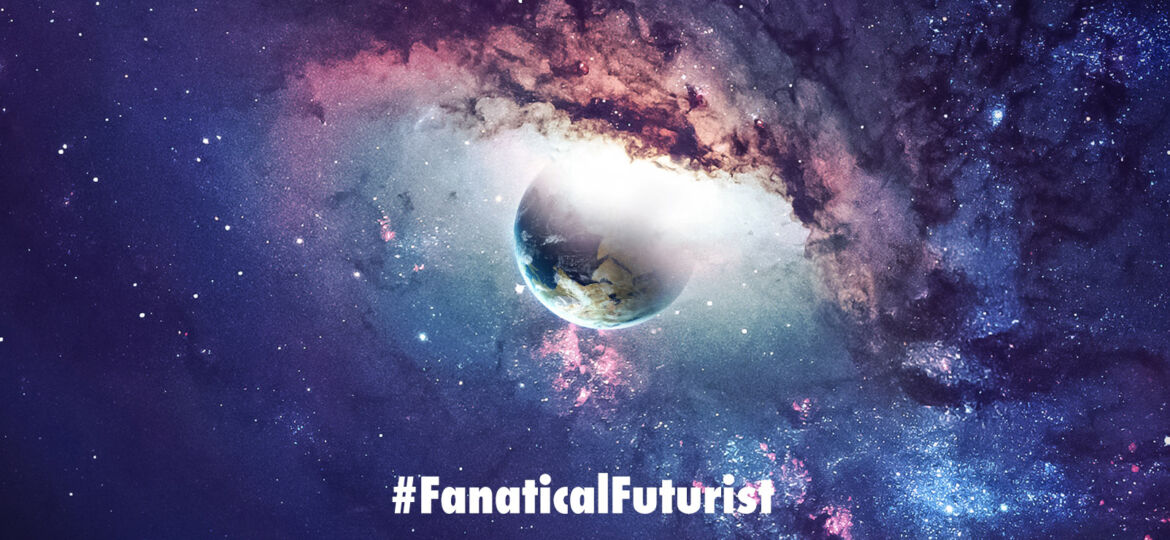
WHY THIS MATTERS IN BRIEF
Given the right tools you can move anything, including a universe, and now a physicist has developed a new stellar engine concept.
 Interested in the Exponential Future? Connect, download a free E-Book, watch a keynote, or browse my blog.
Interested in the Exponential Future? Connect, download a free E-Book, watch a keynote, or browse my blog.
I love crazy ideas, because in most cases those ideas have now helped us create some cool stuff, from real light sabers and tractor beams, through to holograms and even streaming people’s thoughts to television, as well as, of course, 3D printing houses and creating robots that evolve themselves as well as their code. Naturally. However, as far as out there ideas go this one caught my eye, and as far as hypothetical space megastructures go the Stellar Engine is one of my favourites now – a gigantic contraption built with the purpose of moving our entire Solar System somewhere else and that in essence turns the whole Earth into a giant spaceship. If we ever needed to move it to a different cosmic neighbourhood that is…
Now, new research has put forward another idea for what such a radical stellar engine might look like.
The video below gives you a great overview of the concept which is called the Caplan Thruster, after the astrophysicist Matthew Caplan from Illinois State University in the US who came up with the idea, and it uses the Sun’s own energy to propel it across the galaxy and beyond.
But why would such an enormous machine be needed? Well, while we’re nice and settled where we are, the Universe is constantly shifting, so there’s always a chance that Earth might one day fall into the path of an asteroid shower or a supernova star that’s in the process of exploding into smithereens.
Thanks to today’s technology, we’d get a decent heads-up on such a calamity, something in the region of a few million years. That might just be enough time to help us develop a stellar engine, if we put our minds to it.
The Caplan Thruster would sit close to the Sun, using electromagnetic fields to gather hydrogen and helium from the solar wind to use as fuel that would power two jets of energy – one using helium, pushed through a fusion reactor to create a jet of radioactive oxygen that would move the the thruster forward, and one using hydrogen, to maintain distance from the Sun and to push it forward. The Caplan Thruster would essentially act as a kind of tugboat.
As solar winds alone wouldn’t provide enough fuel, we would also need some kind of Dyson sphere structure too, which would concentrate sunlight into a specific spot on the Sun to increase temperatures, and power output, even further.
The good news is, as the Sun shifts, everything else will follow – kept in the same gravitational dance as before. It’s not necessary to shift Earth, Mars, Jupiter, and the rest of the planets individually, because the pull of the Sun will take care of it for us. Apparently.
The Caplan Thruster has one big advantage over another stellar engine concepts such as the Shkadov Thruster, proposed by scientist Leonid Shkadov – it would be much faster.
At full throttle, the Shkadov Thruster could probably propel us 100 light years over 230 million years. The Caplan Thruster, on the other hand, could move us 50 light years in just 1 million years, hitting the kind of speed that might be needed to escape a supernova.
In terms of the physics involved, the Shkadov Thruster is essentially a giant curved mirror, designed to reflect enough of the photons in the Sun’s solar radiation to get it moving through space. However, this movement could only be in one direction, further limiting the usefulness of the idea.
If we are to get the entire Solar System moving in the future, then the Caplan Thruster might be the best way to go – though we’re only at the ‘scientifically plausible’ stage right now, so don’t expect construction to start anytime soon…
The research has been published in Acta Astronautica.
















